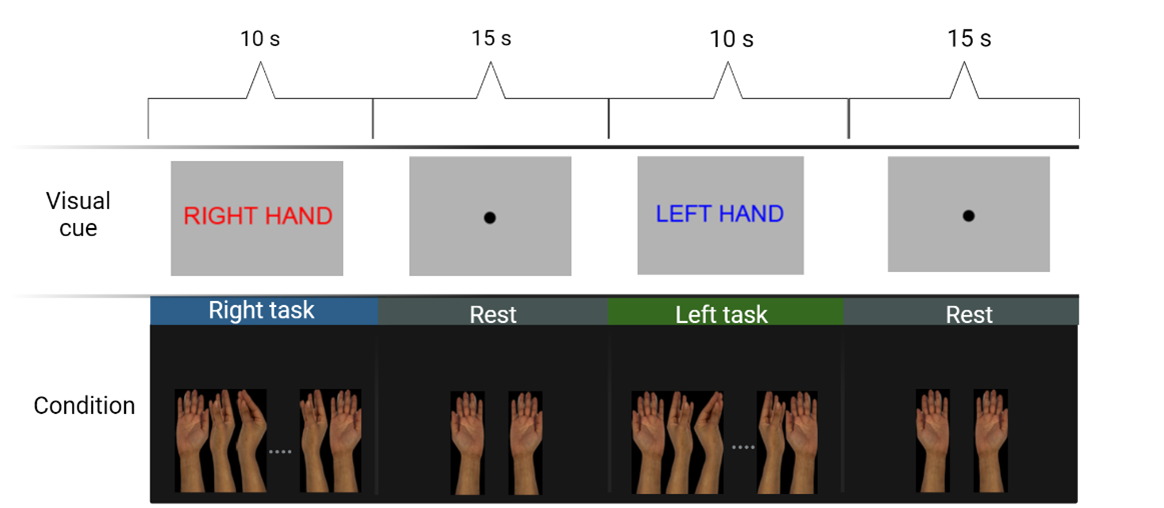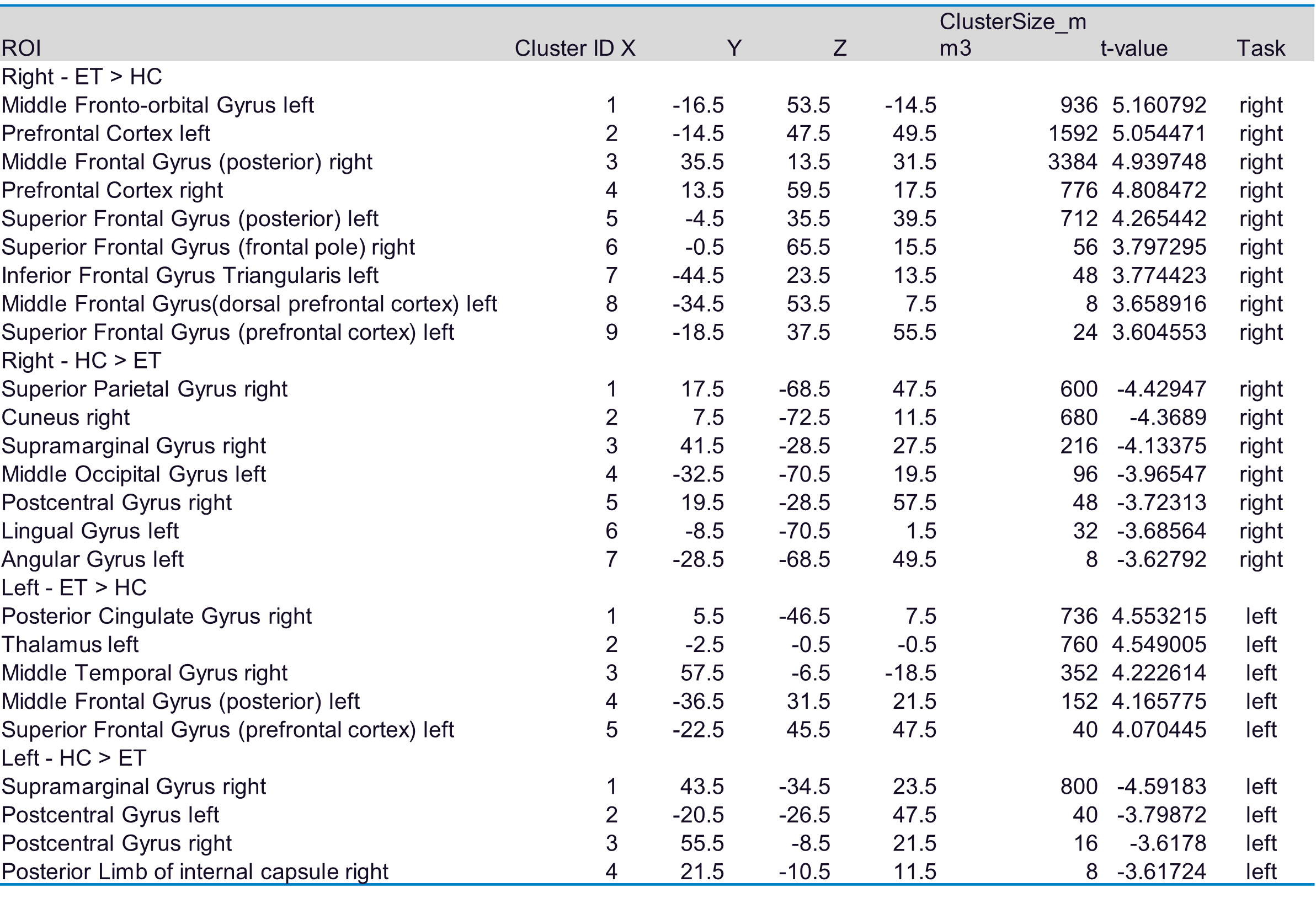Category: Neuroimaging (Non-PD)
Objective: The objective of this study was to analyze task-based functional Magnetic Resonance Imaging (task-fMRI) to investigate neural activity patterns in individuals diagnosed with Essential Tremor (ET) compared to healthy controls (HC).
Background: ET is a prevalent movement disorder, affecting approximately 1.3% of the global population [1]. Characterized by involuntary oscillatory postural tremors of the upper limbs, ET impacts daily activities and diminishes the quality of life. Despite its prevalence, the precise etiology of ET remains unclear.
Method: Eighteen ET right-handed subjects were included for this study from the Next Move in Movement Disorders (NEMO) [2]. 20 HC right-handed subjects were age-matched with the ET group. For ET the severity of each hand was assessed using the Fahn Tolosa Marin Essential Tremor Scale [3]. Participants performed a finger tapping task as illustrated in Figure 1, this block was repeated five times. The fMRI data were preprocessed using a custom pipeline, incorporating fMRIprep v22.0.2, TE-dependence analysis v0.0.12 [4], and Advanced Normalization Tools v2.3.5 [5]. Task-fMRI data were analyzed using searchlight multi-voxel pattern analysis (MVPA) to identify differences between ET and HC, resulting in an accuracy map for each subject. Secondly, group-level statistical analysis was performed with a non-parametric permutation method, contrasting ET > HC. Age and tremor severity were added as covariates. Statistical thresholding was set at p < 0.001 and FDR corrected (α=0.05). Additionally, we investigated which brain areas correlated with tremor severity.
Results: The experimental paradigm revealed significant differences between the right and left-hand tasks (Table 1). Tremor severity analysis in ET revealed a positive correlation between tremor severity and MVPA accuracy in the inferior olive region during the dominant hand task, consistent with previous reports [6].
Conclusion: In summary, our study aims to improve the comprehension of the brain networks in ET by leveraging this integration of MVPA analysis. Through MVPA analysis, we identified regions of interest associated with intentional movement in ET, some of which are novel areas not previously reported in the literature. Further research on these identified regions holds promise for a deeper understanding of ET pathophysiology.
Figure 1. Experimental paradigm of one block.
Table 1. Local maxima of the group comparison.
References: [1] E. D. Louis and M. McCreary, “How Common is Essential Tremor? Update on the Worldwide Prevalence of Essential Tremor,” Tremor and Other Hyperkinetic Movements, vol. 11, no. 1, 2021.
[2] A. M. M. van der Stouwe et al., “The next move in movement disorders (NEMO): developing a computer aided classification tool for hyperkinetic movement disorders.,” BMJ Open, 2021.
[3] C. M. Fahn S, Tolosa E, “Clinical rating scale for tremor In: Jankovic J, Tolosa E, eds.,” in Parkinson’s Disease and Movement Disorders., no. Baltimore, MD: Williams and Wilkins, 1993, pp. 271–280.
[4] E. DuPre et al., “TE-dependent analysis of multi-echo fMRI with *tedana*,” J. Open Source Softw., vol. 6, no. 66, p. 3669, Oct. 2021.
[5] O. Esteban et al., “fMRIPrep: a robust preprocessing pipeline for functional MRI,” Nat. Methods 2018 161, vol. 16, no. 1, pp. 111–116, Dec. 2018.
[6] S. Sharifi et al., “Closing the loop: Novel quantitative fMRI approach for manipulation of the sensorimotor loop in tremor,” Neuroimage, vol. 262, p. 119554, Nov. 2022.
To cite this abstract in AMA style:
AS. Torres-Torres, JR. Dalenberg, AMM. Van-Der Stouwe, MAJ. Tijssen. Essential Tremor: The Relationship Between Hand Dominance and Tremor Severity by MVPA [abstract]. Mov Disord. 2024; 39 (suppl 1). https://www.mdsabstracts.org/abstract/essential-tremor-the-relationship-between-hand-dominance-and-tremor-severity-by-mvpa/. Accessed December 15, 2025.« Back to 2024 International Congress
MDS Abstracts - https://www.mdsabstracts.org/abstract/essential-tremor-the-relationship-between-hand-dominance-and-tremor-severity-by-mvpa/


